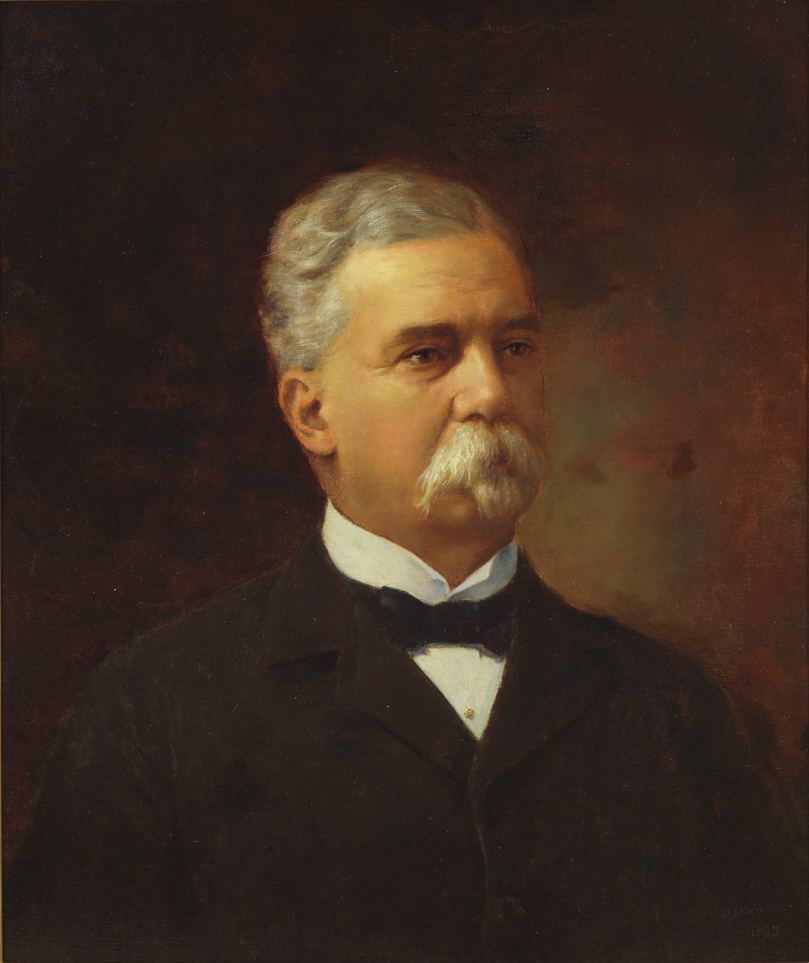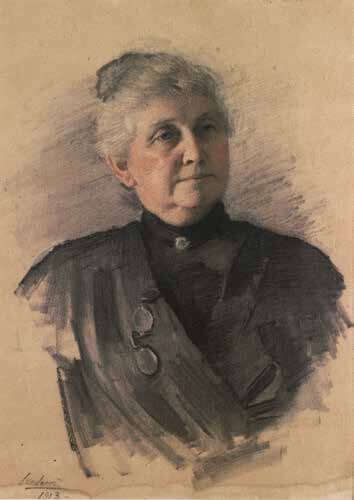Charles Montague & Anna Rice Cooke


From Paintings, Prints, and Drawings of Hawaii from the Sam and Mary Cooke Collection by David Forbes (2016):
Sam and Mary Cooke’s assemblage of Hawaiian paintings, drawings, and prints at Kūaliʻi follows in the collecting footsteps of Sam’s great-grandmother, Anna Rice Cooke. Anna was born on September 5, 1852, at Punahou School to missionary-teachers William Harrison Rice and Mary Sophia Hyde Rice. Her parents had arrived in the islands in 1841 on the ship Gloucester. For the greater part of their missionary careers they were at Punahou School, William as a teacher and manager of the school farm and Mary as the school matron. Ill health finally forced William’s resignation, and the family moved to Kauaʻi, where Mr. Rice took over management of the infant Lihue Plantation and its sugar mill. Their lives were simple and no art was in evidence. When William Harrison Rice died in Lihue on May 27, 1862, the meager one-page probate inventory of his assets listed a few pieces of furniture but not a single picture is recorded in the household – certainly not an auspicious beginning for daughter Anna, who as an adult became a connoisseur of European and Asian art.
After Mr. Rice’s passing, nine-year-old Anna joined the household of her older sister Hannah Maria, wife of Paul Isenberg. Hannah died in Lihue, Kauaʻi, on April 7, 1867, at age twenty-five. Some years later, when Paul Isenberg visited his homeland Germany, with his second wife, Beta, young Anna accompanied them. There Paul and Beta introduced Anna to museums, collections of paintings, and art instruction – all of which found expression in the museum Anna established, built, and endowed fifty years later: the Honolulu Academy of Arts, now the Honolulu Museum of Art.
Back in the islands, Anna was married in Lihue, Kauaʻi on April 29, 1874 to Charles Montague Cooke, the son of missionaries Amos and Juliette Cooke. The young couple first made their home in Honolulu in the old mission house on King Street. C.M. Cooke found success in lumber and shipping. When the Reciprocity Treaty with the United States when into effect in 1876 — and Hawaiian sugar growers were able to enter the American market on equitable terms and without crippling tariffs–young Cooke’s business endeavors began to thrive. Great-grandson Sam remarked that C.M. had “the Midas touch.”
In 1880, the Cookes built a house on Beretania Street across from Thomas Square. A two-story rambling Victorian structure, its interior was tastefully arranged and enhanced with “parlor pieces.” Collecting paintings began several years later when well-known artists started to visit the islands. Charles Furneaux had come to the islands the year the Cookes moved to Beretania Street, but it was the arrivals of artists Joseph D. Strong in 1882 and Jules Tavernier late in 1885 that sparked their collecting. At that time the Cookes acquired several important volcano paintings by Tavernier and two of his landscapes in pastel; both pastels are now in the Honolulu Museum of Art.
In 1903 the Cookes made an extended tour of Japan and returned with an enormous shipment of seventeen crates of “Japanese curios” and stone garden ornaments and plants, including ten camellia and four dwarf cherry trees. This visit marked the beginning of Annaʻs enduring interest in the arts of Asia.
Anna was particularly drawn to the art of Japan, which was an unusual area of interest among collectors of the day–China was then the main focus of anyone interested in “Asian art.” Hence she was able to get stunning works of art from Japan at rather modest prices. Anna is remembered as having been particularly fond of Japanese screens. Her collection grew to include important Chinese paintings, ceramics and lacquers, and a few superb early jades. She also assembled a major collection of Korean ceramics.
In San Francisco, the Cookes purchased several landscapes of California artist William Keith, and in New York City in 1905 they visited the studio of American artist Thomas Moran and selected a magnificent view of Yellowstone for display in the Bank of Hawaiʻi building. Years later, during his term as a trustee of the Honolulu Academy of Arts, great-grandson Sam arranged the transfer of the Moran painting from the Bank of Hawaii to the museum, which considers it to be one of the finest American paintings in the collection.
About 1910 Anna purchased a collection of sixteen Old Masters from the family of Honolulu businessman Rudolph Bukeley. Perhaps the best was a Dutch seventeenth-century painting titled The Burgermeisters Family (then attributed to Gonzales Cocques–but the artist is now undetermined), now in the Honolulu Museum of Art. There were also a few Italian school and Netherlandish school seventeenth- and eighteenth-century canvases–with overlay ambitious attributions. From today’s viewpoints, it was a very modest beginning, but at the time it was far superior to any other assemblage of Old Masters in the islands. To house the collection, the Cookes built a long gallery at the back of Cooke Library at Punahou School. The trustees of the school accepted the gift of the gallery and loan of the pictures, and the gallery was opened to the public.
But Anna Cooke always enjoyed being a patron of living artists. When Charles Bartlett came to Honolulu in 1917, an exhibition of his work was opened to the public in the Cooke home, and she purchased a large group of his paintings and watercolors of Asia. Bartlett remained in the islands and became a cherished family friend and advisor. Bartlett’s portrait of Anna (always on display at the entrance of her museum) is perhaps his finest painting.
After the 1920s, Anna’s collecting focused on acquisitions for the infant Honolulu Academy of Arts. Her collecting became more diverse and her selections were quite remarkable. The acquisition of Chinese and Japanese works of art continued apace. Major acquisitions during the last few years of her life were far-ranging in their geographical scope.
Excerpted from Partners in Change by David Forbes, Ralph Thomas Kam, and Thomas Woods (2018) (p. 201):
The Castle and Cooke partnership eventually proved to be very successful and profitable, becoming one of the Big Five sugar factors. After Amos Cooke’s incapacity, his son Charles M. Cooke guided the business to success. Charles married Anna C. Rice, the fifth child of William H. and Mary H. Rice, who were also ABCFM (American Board of Commissioners for Foreign Missions) missionaries. The family became increasingly involved in philanthropy. Charles and Anna merged their assets, and in 1909, Charles died. Funded by a portion of their merged assets, Ann created the Charles M. and Anna C. Cooke Trust in 1920 to benefit “all worthy endeavors for the betterment and welfare of this community and other communities.” In 1980, the Trust became the Cooke Foundation, Limited, a foundation that today supports many worthy projects throughout the islands. At the same time, Anna formed the Trust, she also decided to create Hawaiʻi’s first art museum, reflecting the multicultural heritage of Hawaiʻi. After cataloguing her family’s personal collection, she and her family members chartered a museum in 1922, donated land for the museum, tore down the family home for the new museum, created a $25,000 endowment, hired an architect, and opened the original core footprint of the present museum in 1927.
Eight children: Charles Montague Cooke Jr., Clarence Hyde Cooke, William Harrison Rice Cooke, George Paul Cooke, Richard Alexander Cooke, Alice Theodora Cooke, Theodore Atherton Cooke, Dorothea Cooke (twin of Theodore) died one year after birth.